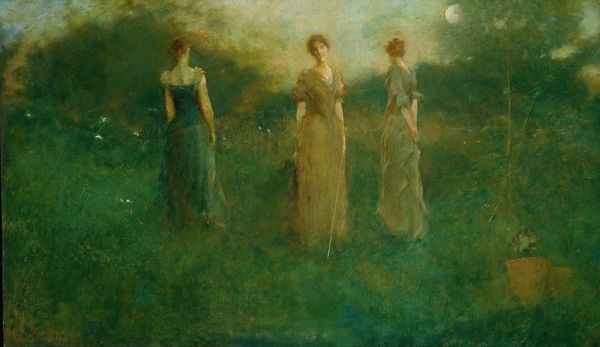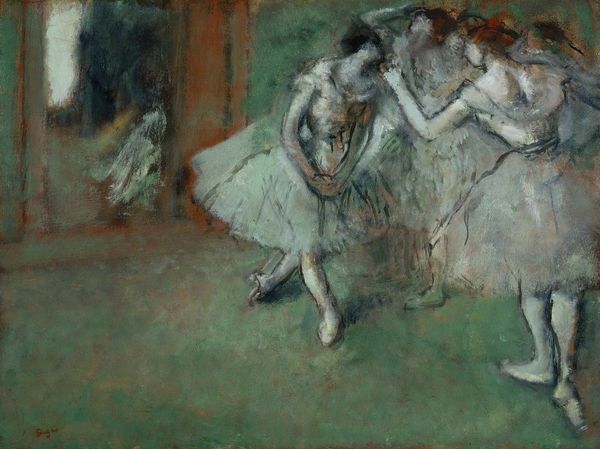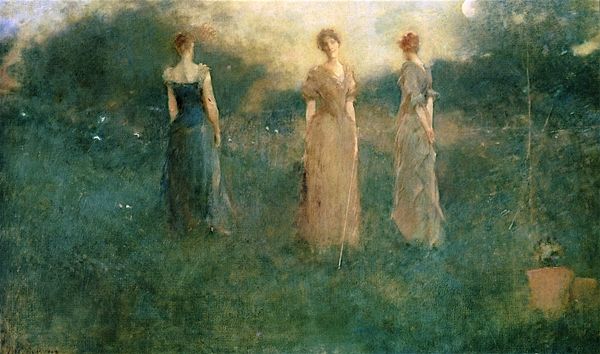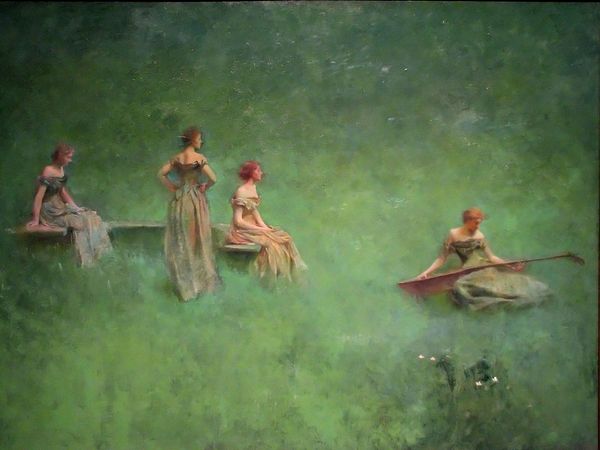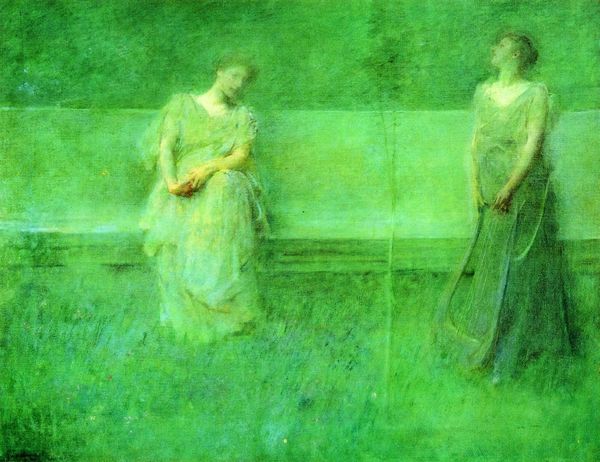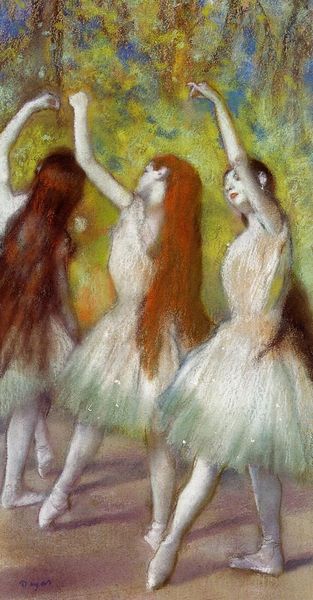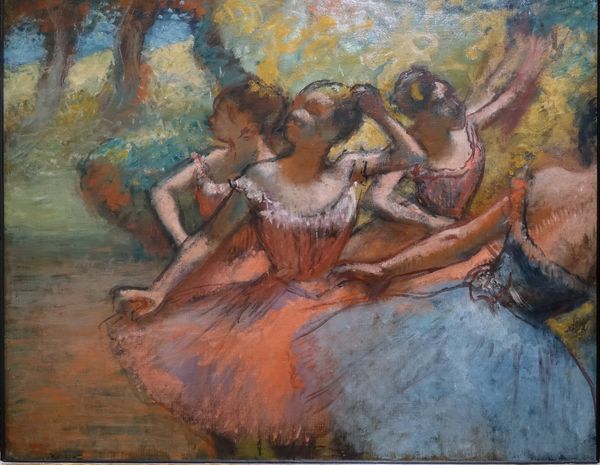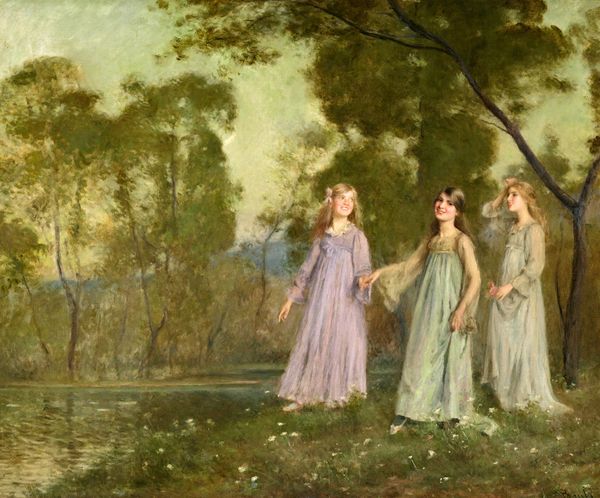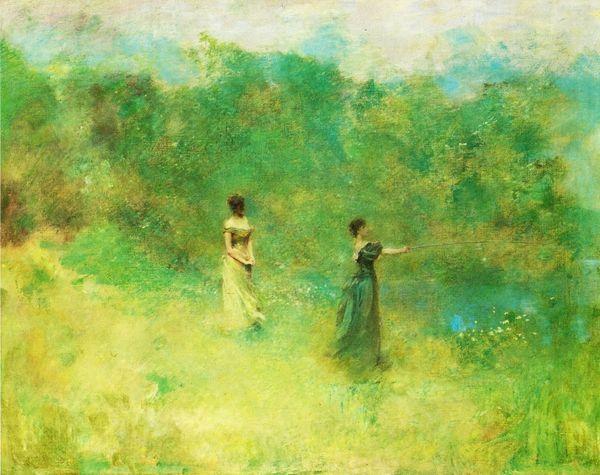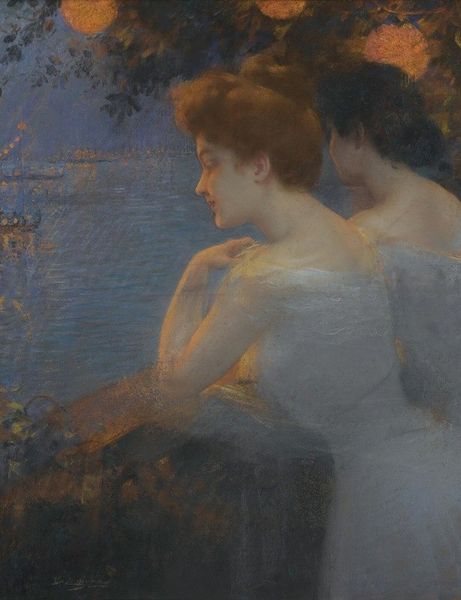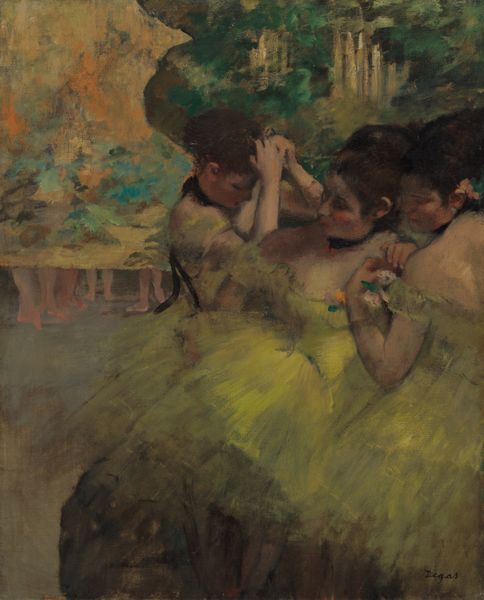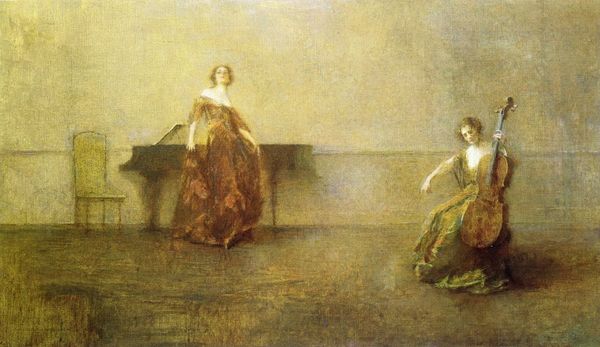
Copyright: Public Domain: Artvee
Editor: Here we have Thomas Wilmer Dewing’s "Summer," painted in 1890. It’s oil on canvas, and depicts a group of women dancing or maybe just moving gracefully in a field. There's something very dreamlike about it, almost as if they are spirits in a verdant otherworld. How do you interpret this work, and what stories do you think it might be telling? Curator: It whispers, doesn't it? Dewing was after something beyond straightforward representation. Look how he uses a muted palette, the soft edges… it’s almost like a memory, a half-remembered summer afternoon. The women become part of the landscape, ethereal figures intertwined with nature. The harp adds another layer, suggesting music and perhaps a kind of private performance. Editor: I like the idea of a private performance, as if we are not meant to be witnessing this. Curator: Perhaps. Dewing belonged to a group of artists known as the American Ten, and they often sought to capture fleeting moments of beauty and introspection. It's not a grand historical narrative, but something far more personal. Does it make you think about music or poetry? Or maybe about trying to hold onto a perfect moment? Editor: Absolutely. I hadn't thought about the connection to music, but with the harp there it now seems impossible to ignore. This painting suddenly feels fragile, precious even. Like a melody that is quickly forgotten once it ends. Curator: Beautifully said. Dewing reminds us that art can be about feeling just as much as seeing, and that the best art often invites us to linger and imagine. Editor: I'm leaving with a completely different impression of this piece, which makes it the best possible learning experience. Thanks.
Comments
No comments
Be the first to comment and join the conversation on the ultimate creative platform.
